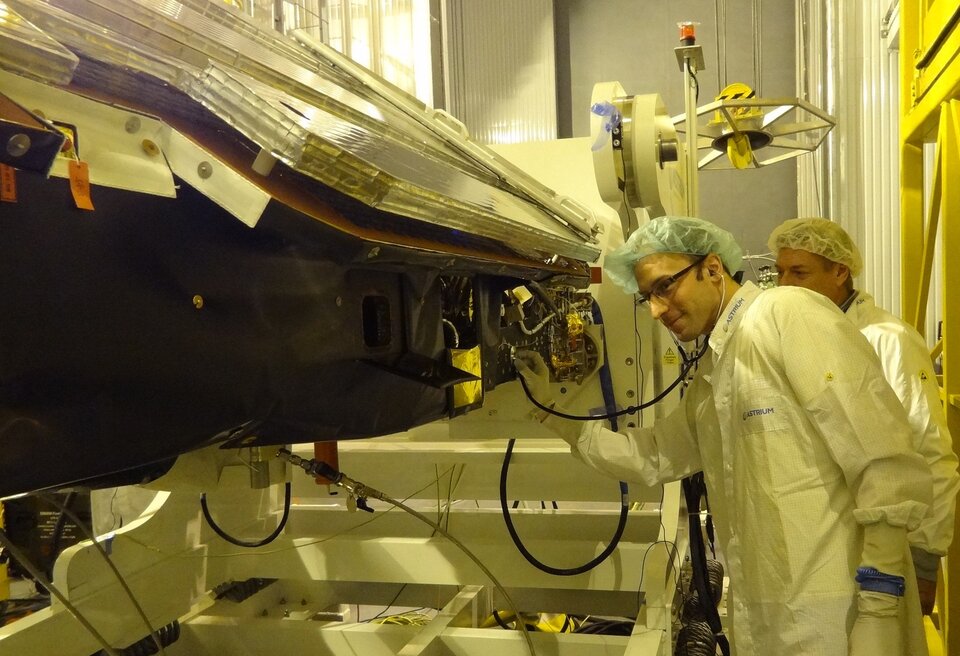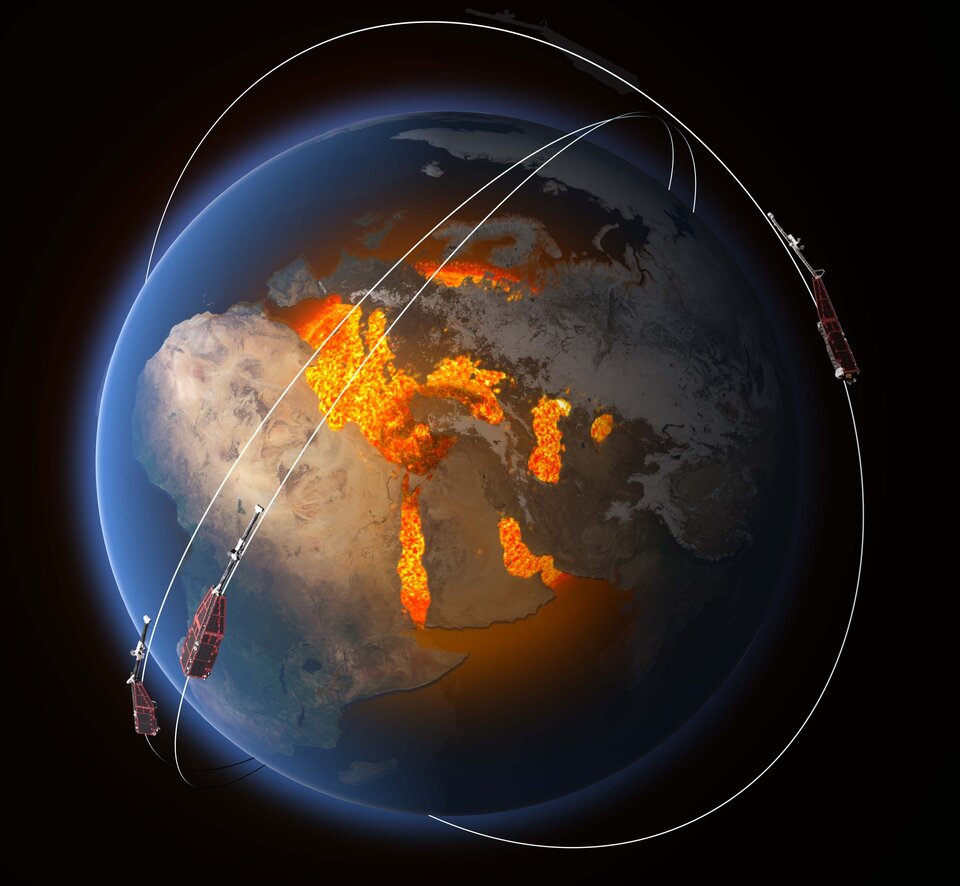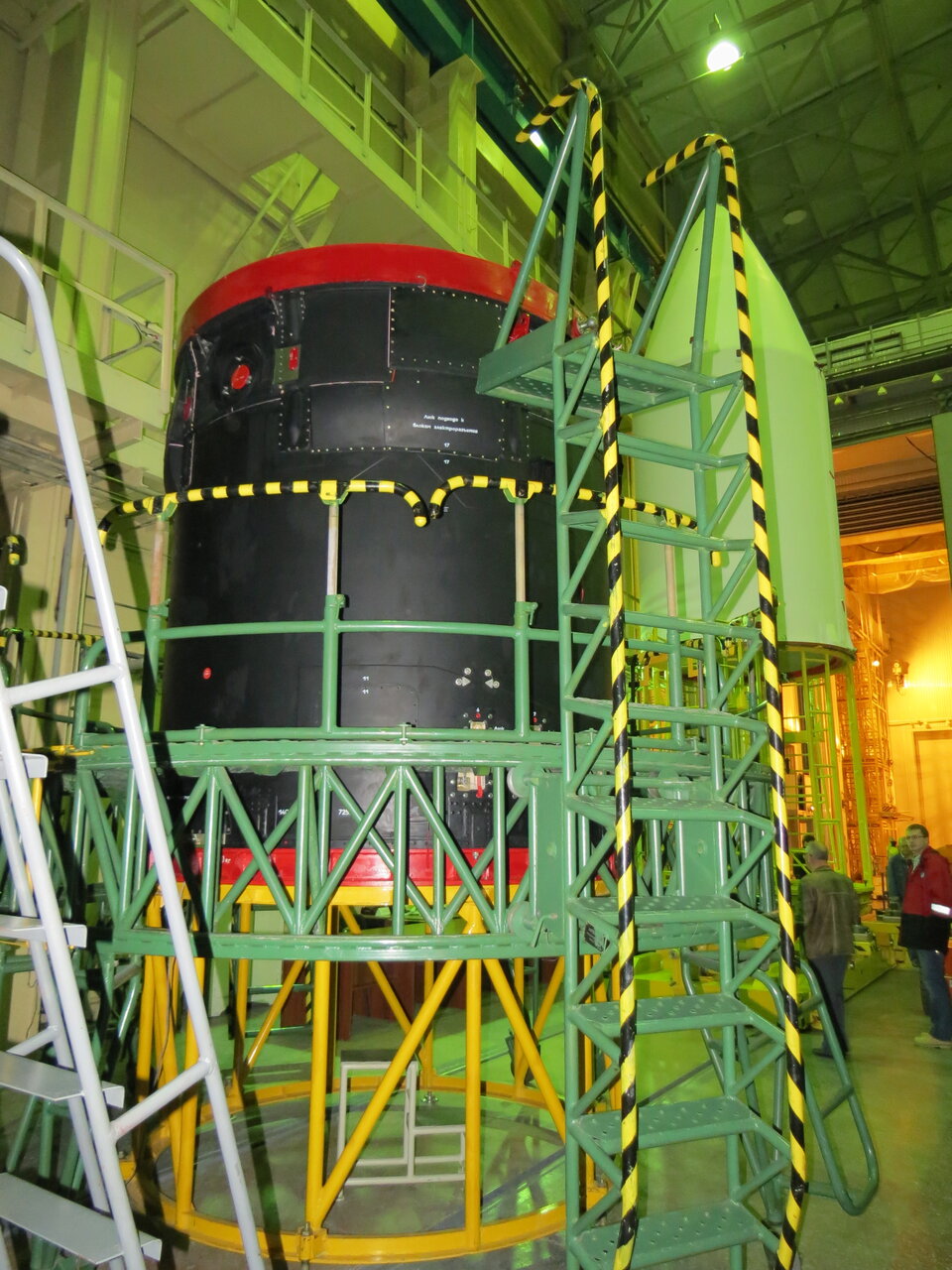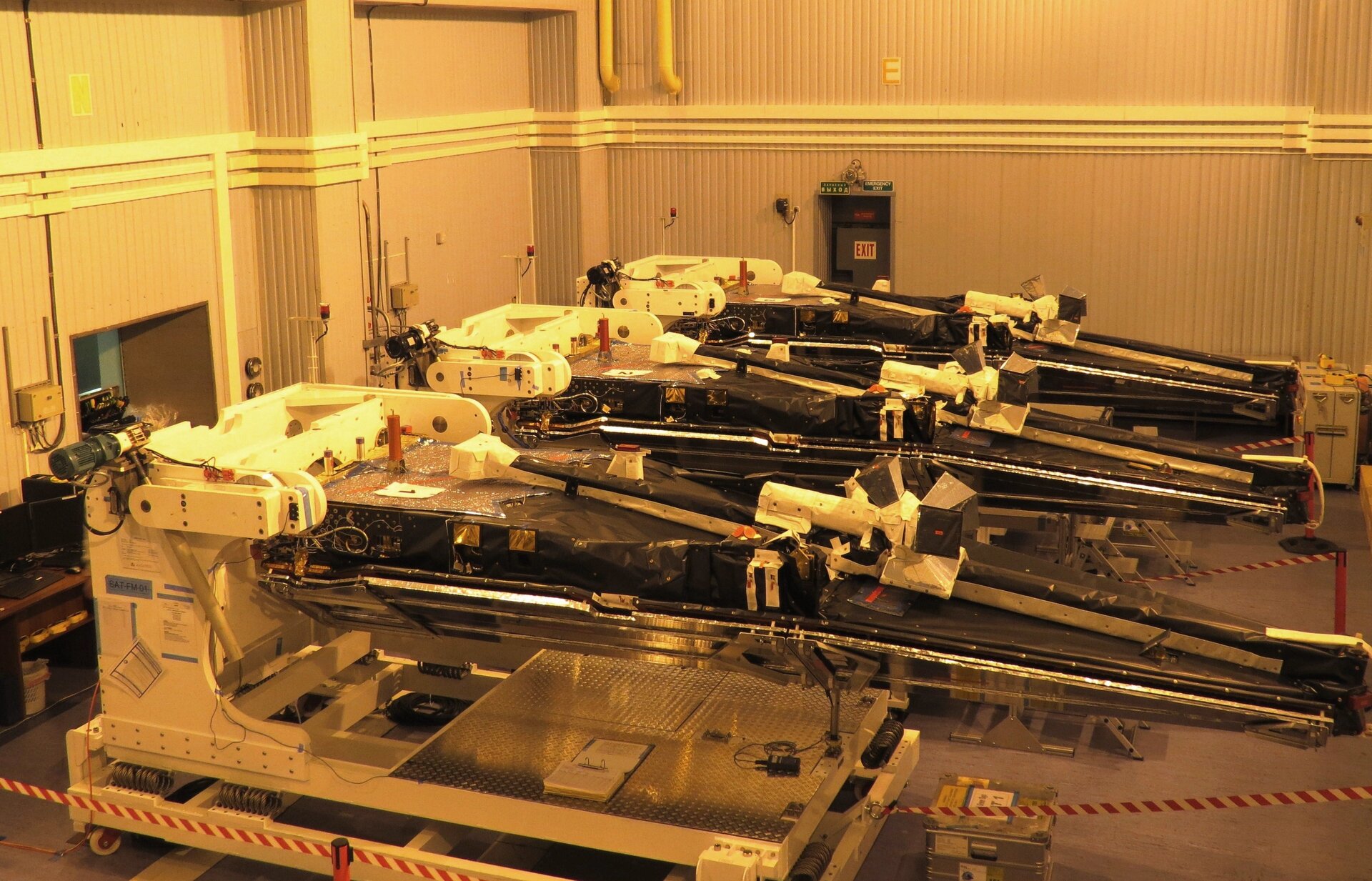Magnetic field mission fuelled for launch
With launch just a month away, ESA’s Swarm constellation has been fuelled. Engineers will soon be focusing on the careful task of attaching the three identical satellites to the upper stage of the rocket for simultaneous release into orbit around Earth.
The Swarm satellites and all the equipment needed to prepare them for liftoff arrived at the Plesetsk launch complex in Russia just over three weeks ago. The cargo plane made three round trips to transport the whole shipment amounting to about 60 tonnes from Munich, Germany.
Since their safe arrival, the three satellites have been unpacked, have undergone various tests to make sure their components work as they should, and have been fuelled with Freon 14 and tested for leaks.

The valves in the propulsion system have also been tested – which, interestingly, included listening to them with a stethoscope.
All this has not only been a technical undertaking, but also a logistical challenge because the three satellites have had to be moved one by one in and out of the fuelling hall.
The completion of fuelling marks a significant milestone in the campaign to prepare the Swarm mission for launch on 14 November at 12:02 GMT (13:02 CET).

Now that the task of fuelling has finished, the focus will turn to fixing multilayer insulation to the satellites and carrying out a set of mechanical tests.
The satellites will then be attached to the ‘Breeze’ upper stage of the Rockot launcher. Breeze and the fairing arrived from Moscow a few days ago and are being cleaned in preparation.
Swarm is ESA’s first constellation of satellites for Earth observation.
The design of the satellites is not only a result of the instrument package they carry, but also because they have to be compact enough to all fit into the launcher fairing.
A tailor-made dispenser will ensure that the three separate simultaneously from the upper stage.


Access the video
Next in ESA’s series of Earth Explorers, Swarm follows GOCE, SMOS and CryoSat.
Each satellite in this ongoing series is developed to fill gaps in our knowledge of how the planet functions and demonstrate new technologies for observing Earth from space.
Swarm is dedicated to delivering information to help us understand Earth’s magnetic field.
Equipped with magnetic sensors and flying in carefully selected orbits, the three Swarm satellites will identify and measure, very precisely, the different magnetic signals that stem from Earth’s core, mantle, crust, oceans, ionosphere and magnetosphere – which together form our magnetic field.

Although invisible, the magnetic field and electric currents in and around Earth generate complex forces that have immeasurable impact on everyday life.
The field can be thought of as a huge bubble, protecting us from cosmic radiation and charged particles that bombard Earth in solar wind.
Swarm will provide a window into different natural processes, from those occurring deep inside the planet driving Earth’s ‘dynamo’ to weather in space resulting from solar activity. This, in turn, will yield a deeper understanding of why Earth’s protective shield is weakening.






